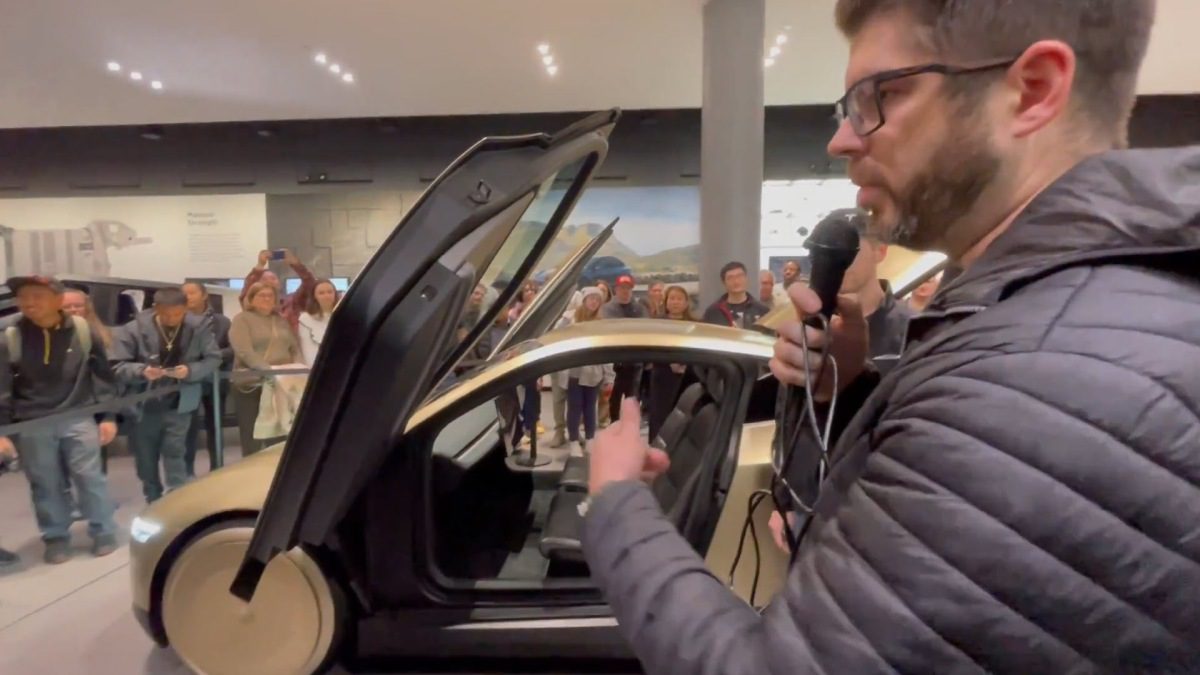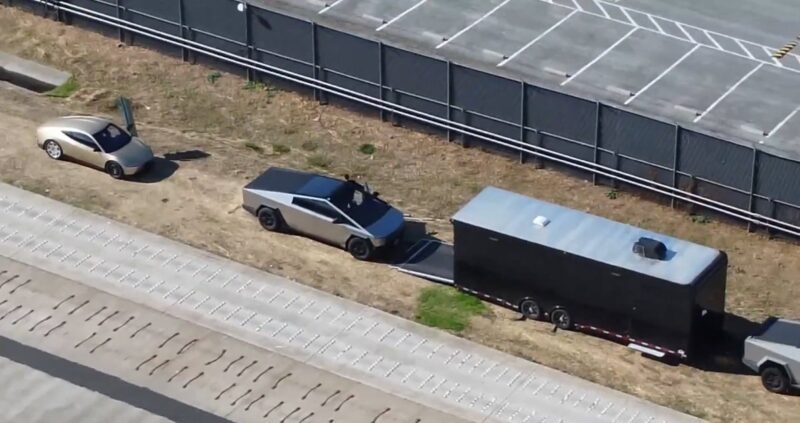Tesla last October unveiled the prototype of its Robotaxi at Warner Bros studios in California, which it called the Cybercab with no steering wheels or pedals.
Since then, the twin-seater Cybercab has been showcased at multiple Tesla events and in showrooms in the US. Now, it has been spotted at Tesla’s test facility in Fremont, California undertaking road trials.
In a video of a drone flyover on YouTube, which EV enthusiast Sawyer Merritt reshared on X, a gold Cybercab is seen driving on different surfaces on the track, possibly testing the vehicle’s suspension system.
It is then seen driving onto a dirt road and parking behind a Cybertruck, which has another Cybertruck in front of it with a vehicle trailer to possibly drive it off-site, back to Tesla’s engineering and design studios in California for further testing.
The Cybercab was unveiled at the “We, Robot” event in Hollywood, to showcase what it says will be the future direction of the then world’s best-selling EV brand.
The Cybercab comes with no steering wheels or pedals and features a horizontal lightbar, which the Cybertruck inspires, and that theme is continued across various exterior panels.
It also has doors that open outwards and upwards, which is different from any of the other vehicles in Tesla’s current lineup.
The vehicle also doesn’t appear to have a rear window, which is likely to be replaced with the camera as seen on the Cybertruck.
On the interior front, as seen in other Tesla models, it’s a very minimalistic design with a large screen that is common amongst many Tesla models.
This has been confirmed by Tesla engineers as the largest in any Tesla, coming in at 21 inches.
At the October 2024 unveiling event, Tesla’s CEO, Elon Musk, confirmed that this two-seater model is expected to be in production by 2026 at a price point of around $US30,000 or under $A45,000.
This price point will be achieved by cutting the total number of parts from the vehicle as well as using a revolutionary “unboxed” manufacturing method, developed by Tesla’s in-house manufacturing team.
The reduction in parts was also confirmed by Tesla engineer Eric E, who shared in December 2024: “We cut the parts down in the Cybercab by a substantial margin. We are going to be delivering a car with roughly half the parts of the Model 3 today.”

The latest sighting shows that Tesla appears to be in the final stages of engineering testing for its Cybercab robotaxi product, which is expected to go into production in 2026.
Currently, though, the Robotaxi program appears to be going full steam ahead in parts of Texas and California, with multiple other markets to be added to the network using the Model Y vehicles.
We will keep an eye on when the Cybercab enters the Robotaxi fleet as the company zooms in on its autonomous driving future.

Riz is the founder of carloop based in Melbourne, specialising in Australian EV data, insight reports and trends. He is a mechanical engineer who spent the first 7 years of his career building transport infrastructure before starting carloop. He has a passion for cars, particularly EVs and wants to help reduce transport emissions in Australia. He currently drives a red Tesla Model 3.


